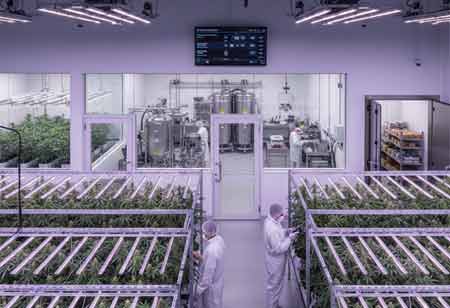Thank you for Subscribing to Cannabis Business Insights Weekly Brief
Cutting-Edge Cannabis Extraction Techniques
Cannabis extraction advances innovatively, enhancing product purity, efficiency, and bioavailability for medical and recreational markets.

By
Cannabis Business Insights | Friday, March 28, 2025
Stay ahead of the industry with exclusive feature stories on the top companies, expert insights and the latest news delivered straight to your inbox. Subscribe today.
Fremont, CA: Cannabis extraction plays a significant role in today’s cannabis economy, impacting both the medical and recreational markets. The method of extraction affects the final product’s form and usage. For instance, while recreational vape oils require high purity and must be free from residual solvents, medical CBD extracts are typically oil-based, devoid of contaminants, and designed for easy consumption.
Modern extraction has been transformed by sophisticated industrial technology and chemical equipment, opening the door to developing new goods, including wax concentrates, vape oils, and oral tinctures.
Large quantities of cannabis may be processed effectively using alcohol extraction, especially ethanol extraction. It can be carried out in a room, in cold or hot temperatures. Using the Soxhlet process, hot alcohol is cycled through cannabis flowers to extract terpenes and cannabinoids, as well as undesirable plant waxes and chlorophyll. This problem is avoided by cold alcohol extraction, which uses lower temperatures. Compared to a "giant tea bag," room-temperature ethanol extraction is scalable, energy-efficient, and streamlines post-processing.
Hydrocarbon extraction improves the flavor and scent of vape oils and tinctures. It uses butane or propane to extract a wider variety of terpenes. These solvents' low boiling temperatures make removal simple and protect terpenes sensitive to temperature. However, their flammable and volatile properties restrict scalability and call for cautious handling for safety.
Despite being relatively new to the cannabis market, supercritical CO2 extraction is well-liked because it effectively extracts plant oils and waxes. This process extracts terpenes and cannabinoids by converting CO2 into a supercritical fluid using specialized equipment. Despite its high initial expenditures, the technique is prized for its efficacy and compatibility with specific manufacturing philosophies.
Innovative extraction methods introduce new procedures or improvements to current technology. Sound radiation is used in ultrasound-assisted extraction to increase the efficacy of alcohol extraction by generating microbubbles that break down plant cell walls and promote the solubility of cannabinoids. Hydrodynamic extraction combines temperature, pressure, and ultrasonication to create full-spectrum extracts from fresh cannabis flowers while maintaining aromatic components.
A cutting-edge technique is making cannabis-infused honey with bees. Because they don't have an endocannabinoid system, bees incorporate cannabinoids into their honey. With its excellent bioavailability and beneficial medicinal benefits, this natural honey with low THC concentrations offers a novel commercial extraction opportunity.
The demand for increased productivity and customized solutions that preserve aromatic components and boost bioavailability is propelling the cannabis extraction sector's evolution. These cutting-edge methods will probably gain popularity as the industry expands, influencing cannabis extraction in the future.






